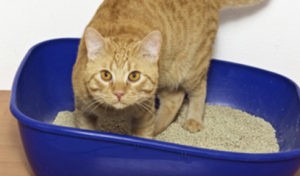Glaucoma is a disease in which the pressure of the fluid in the eye is higher than normal. Left untreated, glaucoma often progresses to blindness. The condition can affect dogs and cats, though canines are more likely to inherit the disease. With hereditary glaucoma, it is important to look for early symptoms — such as redness around the eye — in order to diagnose the condition early and begin treatment. Drugs and surgery can be used to treat the condition and maintain vision, but once it progresses to blindness, the changes are irreversible.
Overview
The structures inside the eye, such as the iris and lens, are surrounded by fluid. Normally, the movement of fluid through the eye is well controlled. However, sometimes the fluid doesn’t circulate normally, and fluid pressure builds up inside the eye. Glaucoma is the general term used to describe increased pressure inside the eye.
Glaucoma is much more common in dogs than in cats, and it can have many causes. Primary glaucoma is often an inherited genetic condition and has been identified in several dog breeds, including Basset Hounds, Cocker Spaniels, and Siberian Huskies. It tends to affect both eyes but may not occur in both eyes at the same time. Secondary glaucoma means that the pressure inside the eye was normal until another condition caused pressure to increase. Conditions that can cause secondary glaucoma include trauma to the eye, inflammation involving the eye, a cataract, or a tumor inside the eye. Glaucoma can also be classified as acute (for example, occurring suddenly in response to trauma) or chronic (pressure builds up over a period of time).
Glaucoma can damage several important structures inside the eye, including the optic nerve, the retina (tissue at the back of the eye that is necessary for vision), the cornea (the clear membrane on the front of the eye), and the lens. Injury to any of these structures, alone or in combination, can lead to permanent blindness.
Symptoms and Identification
Dogs with primary glaucoma are most often diagnosed between the ages of 3 and 7, but canines of all ages are at risk. The disease usually affects both eyes, though it can take weeks or months from the time you see symptoms in one eye to the next. Whether glaucoma occurs suddenly or over a longer period of time, the clinical signs can be similar:
Pain (squinting, rubbing the eye or face against the floor or against furniture)
Cloudiness or “bluish” discoloration of the eye
Tearing
Red eyes
Increased sensitivity to light
Dilated pupils
Unequally sized pupils
Decreased appetite (due to pain)
Partial or complete blindness
“Head shyness” (reluctance to have the face or head touched/approached, due to pain and reduced vision)
Diagnosis is based on evaluating the pressure inside the eye through a procedure called tonometry. There are several ways to perform tonometry, and they all involve using a tonometer — a device that is applied to the surface of the eye that can help your veterinarian estimate the amount of pressure inside the eye. Other tests may also be performed to evaluate the conditions inside the eye.
Affected Breeds
Primary glaucoma has been reported in many dog breeds including Cocker Spaniels, Boston Terriers, Miniature Poodles, Chow Chows, Bassett Hounds, and Dalmatians.
Treatment
Treatment of glaucoma is aimed at controlling the flow of fluid through the eye and reducing the pressure inside the eye to normal levels, usually through the use of topical ophthalmic drugs and oral medications. Your veterinarian may recommend referral to a veterinary ophthalmologist for initial treatment or for long-term management.
In many cases, drug therapy is not effective long term. For these pets, surgical options including laser or cryosurgical techniques may be recommended. Medication is often still necessary after surgery.
Once vision is lost, the dog’s comfort becomes the primary concern. Veterinarians may recommend enucleation (complete removal of the eye) or other procedures to alleviate pain and reduce the stress related to chronic treatment.
Prevention
Most cases of glaucoma are not easily preventable. Primary glaucoma (the inherited form) eventually affects both eyes (though not always at the same time), so if one of your pet’s eyes is affected, your veterinarian may recommend treating both eyes to help delay the start of glaucoma in the normal eye.
Even though glaucoma may not be preventable in many cases, early diagnosis and treatment may reduce the risk of permanent damage and blindness. Regular wellness examinations are important, as some of the early signs of glaucoma may be detected during physical exam. Also, monitoring your pet at home for any signs of discomfort or changes in attitude can also increase the chance of identifying problems like glaucoma.


